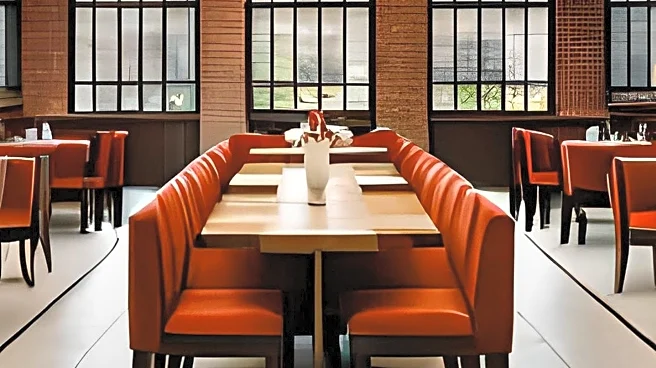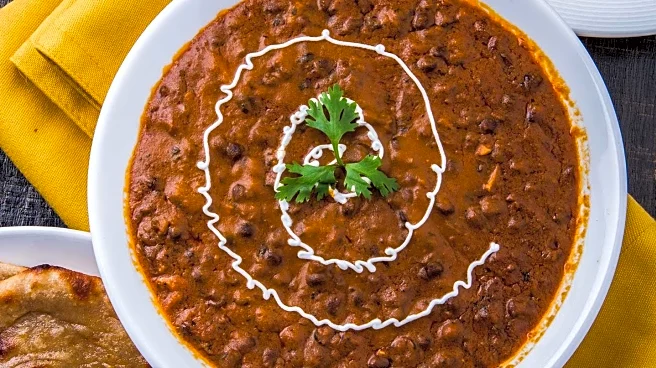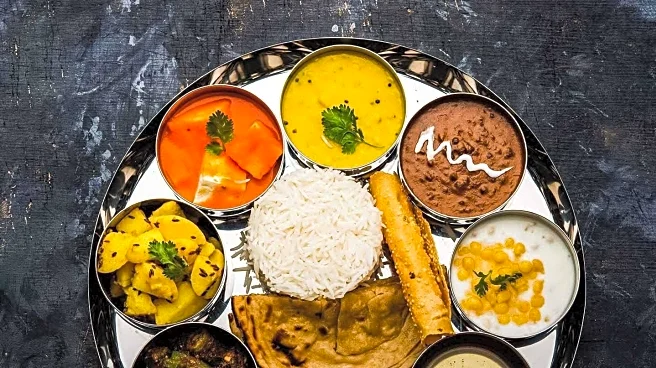What's Happening?
Indian cuisine in the United States is undergoing a significant transformation, moving from traditional curry houses to upscale dining experiences. Executive Chef Vikas Khanna, known for his Michelin-starred restaurant Junoon in New York City, has been a pivotal figure in this evolution. His latest venture, Bungalow, exemplifies the trend towards sophisticated Indian dining, with reservations selling out rapidly and waitlists exceeding 1,000 people. This shift is part of a broader trend in fine dining, which has seen increased consumer interest post-pandemic. Younger generations, particularly Gen Z and millennials, are driving demand for global flavors, contributing to the rise of Indian restaurants. According to Datassential, the number of upscale Indian dining establishments in the U.S. has grown significantly, with new openings increasing from 54 in 2018 to 115 in 2024.
Why It's Important?
The rise of upscale Indian dining in the U.S. reflects broader changes in consumer preferences and dining experiences. As American consumers seek unique and differentiated experiences, Indian cuisine is gaining prominence alongside traditional European cuisines like Italian and French. This trend is not only reshaping the culinary landscape but also attracting significant investor interest. The recent investment by L Catterton in the U.K. Indian restaurant chain Dishoom highlights the growing financial opportunities in this sector. The increasing affluence of the Indian American population, with a median household income significantly higher than the average for Asian American households, further supports the demand for high-end Indian dining experiences.
What's Next?
The continued growth of upscale Indian restaurants in the U.S. is likely to attract more investors and expand the market further. As chefs explore hyper-regional flavors, the diversity within Indian cuisine will become more pronounced, offering diners a richer culinary experience. The Indian Restaurant Association of America has identified this trend as a key focus for 2025, suggesting that the exploration of local cuisines from India will continue to drive interest and innovation in the sector. Additionally, the increasing interest from investors may lead to more international chains entering the U.S. market, further diversifying the dining options available.
Beyond the Headlines
The shift towards upscale Indian dining also has cultural implications, as it challenges stereotypes and broadens the understanding of Indian cuisine in the U.S. By emphasizing regional specificity, chefs are not only offering authentic flavors but also educating consumers about the rich culinary heritage of India. This cultural exchange through food can foster greater appreciation and understanding between communities, contributing to a more inclusive society. Moreover, the success of these restaurants may inspire other ethnic cuisines to pursue similar paths, enriching the American dining landscape with a wider array of global flavors.













